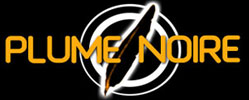
|
How to Draw a Bunny review
:. Director: John Walter & Andrew Moore
:. Genre: Documentary
:. Running Time: 1:30
:. Year: 2004
:. Country: USA
|
Ray Johnson, the most famous unknown artist in the U.S., is at the center of this documentary that draws a portrait of an enigmatic figure whose ultimate performance piece was "staging" his own death.
Johnson, a vivid member of the bohemian artist village, back in Soho's—glorious—art days, was a multidisciplinary artist whose work ranged from collages, paintings and photography to crazed performances. An avant-gardist close to the pop art movement, Johnson is described by one of the several fellow artists he rubs shoulders with as being constantly high without ever taking drugs. He was an artist in the pure sense of the term, as the man and the artist were one indivisible entity, his personality being part of creative universe and vice versa. While he abhorred the commercialization of art, thus avoiding galleries and openings, he pushed the process as far as negotiating the price as the last creative step of a piece.
How to Draw a Bunny intertwines footage of Johnson and interviews of family, friends and peers. One of the strength of this documentary is that it also gives a glimpse at the life of the artistic community, as several of its members who have since made a name for themselves—Christo & Roy Lichtenstein among others— here tell anecdotes about Johnson. I was particularly amused by the interactions between all these eccentric figures and the way they were buying pieces of art from each other.
While the film successfully brings recognition to Johnson and his art—and it would have been difficult to screw up with such a colorful figure—there are a couple of issues with John Walter's documentary approach here. How to Draw a Bunny starts with Johnson's mysterious suicidal death and then attempts to bring pieces of the puzzle together through uncovering his life and artistic path. When the conclusion comes with video footage giving us a tour of his house and offering clues that his death was planned as a last performance piece, we are unfortunately left with an unsolved mystery, the last piece of the puzzle—the reason for his suicide—is missing. We hear a couple of interviewees stating they might have an idea of what might have brought him to such an act, but neither does the filmmaker ask them nor does he try to give us an interpretation. As a result the films looks like an incomplete biography. I was also annoyed with the jazz soundtrack—I personally think other styles of music would have been more adequate for the period—and couldn't figure out why the director even inserted footage of the musicians as transitions.
Should you be a fine connoisseur of Johnson's work or, just like me, a neophyte, How to Draw a Bunny doesn't fail to celebrate an artist and a man who was truly captivating.
Fred Thom

 Documentary Reviews: 1998 - 2011 Documentary Reviews: 1998 - 2011
 Documentary Reviews: 2012 - present Documentary Reviews: 2012 - present
|
|


